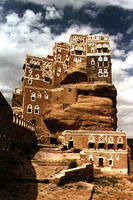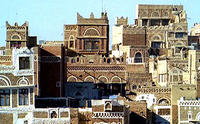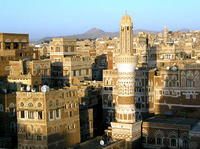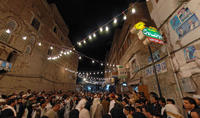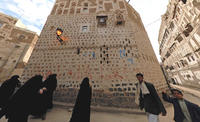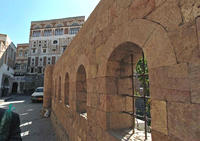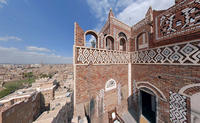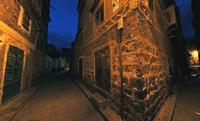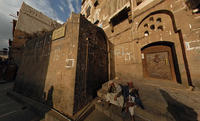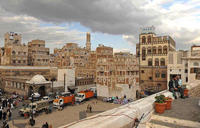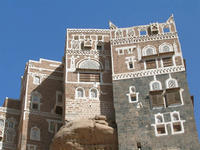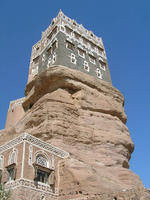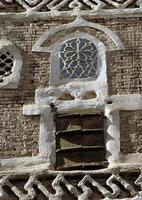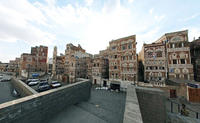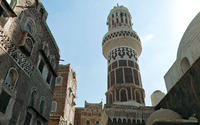You are in: Middle East -> Yemen -> Old City of Sana'a, and traditional search or Image Gallery will yield results of this site only
Old City of Sana'a
| Site number: | 385 |
|
| Type of site: | Heritage in danger | |
| Date: | 7-8th century | |
| Date of Inscription: | 1986 | |
| Location: | Middle East, Yemen, Governorate of the capital Sana’a | |
Up to 75 images are shown here. Click on each for more details or on Image Gallery for more images.
Six official UN languages:
Arabic,
Chinese,
English,
French,
Russian,
Spanish
Other languages: Catalan, Croatian, Czech, Danish, Dutch, Esperanto, Farsi, Finnish, Georgian, German, Hebrew, Italian, Japanese, Latvian, Lithuanian, Malay, Mongolian, Norwegian-bokmål, Polish, Portuguese, Slovenian, Swahili, Swedish, Turkish, Ukrainian, Vietnamese
Other languages: Catalan, Croatian, Czech, Danish, Dutch, Esperanto, Farsi, Finnish, Georgian, German, Hebrew, Italian, Japanese, Latvian, Lithuanian, Malay, Mongolian, Norwegian-bokmål, Polish, Portuguese, Slovenian, Swahili, Swedish, Turkish, Ukrainian, Vietnamese
| Description: |
Situated in a mountain valley at an altitude of 2,200 m, Sana’a has been inhabited for more than 2,500 years. In the 7th and 8th centuries the city became a major centre for the propagation of Islam. This religious and political heritage can be seen in the 103 mosques, 14 hammams and over 6,000 houses, all built before the 11th century. Sana’a’s many-storeyed tower-houses built of rammed earth (pisé) add to the beauty of the site. --WHMNet paraphrase from the description at WHC Site, where additional information is available. For 360 degree imaging of this site, click here. |
|
| Ṣan‘ā’ (Arabic: صنعاء, sometimes spelled Sanaa or Sana'a) is the capital of Yemen and the center of San‘a’ Governorate. San‘a’ is one of the ancient Yemeni cities dating back to the Sabaean dynasty of the 6th Century BC. The oldest written reference to its existence is found in inscriptions which date back to the 1st Century AD. It is suggested that San‘a’ was the capital of the Himyarite kingdom at the onset of the 6th Century AD. When King Yousef Athar (or Dhu Nuwas), the last of the Himyarite kings, was in power, San‘a’ was also the capital of the Ethiopian viceroys, then after 570 of the Persians. As of the dawn of Islam until the detachment of independent sub-states in many parts of Yemen Islamic Caliphate, San‘a’ persisted as the governing seat, who himself is Caliph's deputy in running the affairs of one of Yemen's Three Makhalifs: Mikhlaf San‘a’, Mikhlaf al-Janad and Mikhlaf Hadhramawt. The city of San‘a’ recurrently assumed an important status and all Yemenite States competed to control it. The Mamelukes arrived in Yemen in AD 1517. Following the collapse of the Mamelukes in Egypt at the hands of the Ottoman Turks, Yemen fell under the Ottoman Rule and during the first Ottoman rule of Yemen between 1538-1635, San‘a’ became the capital of the Ottoman Vilayet and also during the Ottoman second rule 1872-1918. In 1918, San‘a’ was the capital of Imam Yahya, who ruled North Yemen. At the onset of the 1962 revolution which deposed the imamate rule, it became the capital of the Yemen Arab Republic. It was then the capital of unified Yemen in 1990 where it is dubbed as the historical capital of Yemen. --Wikipedia. Text is available under the Creative Commons Attribution-ShareAlike License. For 360 degree imaging of this site, click here. | ||
| Rights of Image: | 1001wonders.org | |
| Source: | http://whc.unesco.org/en/list/385 | |
| Reference: | 1. UNESCO World Heritage Center, Site Page. | |




